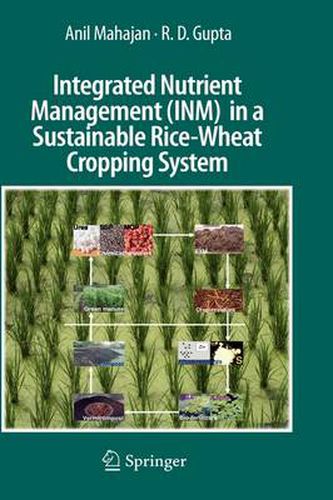Readings Newsletter
Become a Readings Member to make your shopping experience even easier.
Sign in or sign up for free!
You’re not far away from qualifying for FREE standard shipping within Australia
You’ve qualified for FREE standard shipping within Australia
The cart is loading…






This title is printed to order. This book may have been self-published. If so, we cannot guarantee the quality of the content. In the main most books will have gone through the editing process however some may not. We therefore suggest that you be aware of this before ordering this book. If in doubt check either the author or publisher’s details as we are unable to accept any returns unless they are faulty. Please contact us if you have any questions.
Agriculture is the main occupation in India and about 75% of its population depends directly or indirectly on agriculture for their livelihood. It is the dominant sector that contributes 18% of the gross domestic product. Thus, agriculture is the foundation of the Indian economy. The maximum share of Indian exports is also from the agriculture sector. As the population of the country is increasing trem- dously, approximately at the rate of 19 million every year over the existing popu- tion of more than 1 billion (approximately 1. 18 billion), the food grain production must necessarily be increased. This can be done by increasing crop production to match the population growth rate of 2. 2% per annum, which is expected to stabilize at 1. 53 billion around 2050. There is no doubt that the Green Revolution in India during the late 1960s brought self-sufficiency in food grain production, mainly through the increase in rice and wheat crop yields - the two main crops of the country which play an important role from food security point of view. However, the excessive use of fertilizers and pesticides, and the neglect of organic manures for these crops, has resulted in the deterioration of physical, chemical and biological health of the ri- and wheat-growing soils. Owing to the deterioration of the health of these soils, the productivity of the rice-wheat cropping system has now either got reduced or in some places has become constant for the last decade.
$9.00 standard shipping within Australia
FREE standard shipping within Australia for orders over $100.00
Express & International shipping calculated at checkout
This title is printed to order. This book may have been self-published. If so, we cannot guarantee the quality of the content. In the main most books will have gone through the editing process however some may not. We therefore suggest that you be aware of this before ordering this book. If in doubt check either the author or publisher’s details as we are unable to accept any returns unless they are faulty. Please contact us if you have any questions.
Agriculture is the main occupation in India and about 75% of its population depends directly or indirectly on agriculture for their livelihood. It is the dominant sector that contributes 18% of the gross domestic product. Thus, agriculture is the foundation of the Indian economy. The maximum share of Indian exports is also from the agriculture sector. As the population of the country is increasing trem- dously, approximately at the rate of 19 million every year over the existing popu- tion of more than 1 billion (approximately 1. 18 billion), the food grain production must necessarily be increased. This can be done by increasing crop production to match the population growth rate of 2. 2% per annum, which is expected to stabilize at 1. 53 billion around 2050. There is no doubt that the Green Revolution in India during the late 1960s brought self-sufficiency in food grain production, mainly through the increase in rice and wheat crop yields - the two main crops of the country which play an important role from food security point of view. However, the excessive use of fertilizers and pesticides, and the neglect of organic manures for these crops, has resulted in the deterioration of physical, chemical and biological health of the ri- and wheat-growing soils. Owing to the deterioration of the health of these soils, the productivity of the rice-wheat cropping system has now either got reduced or in some places has become constant for the last decade.